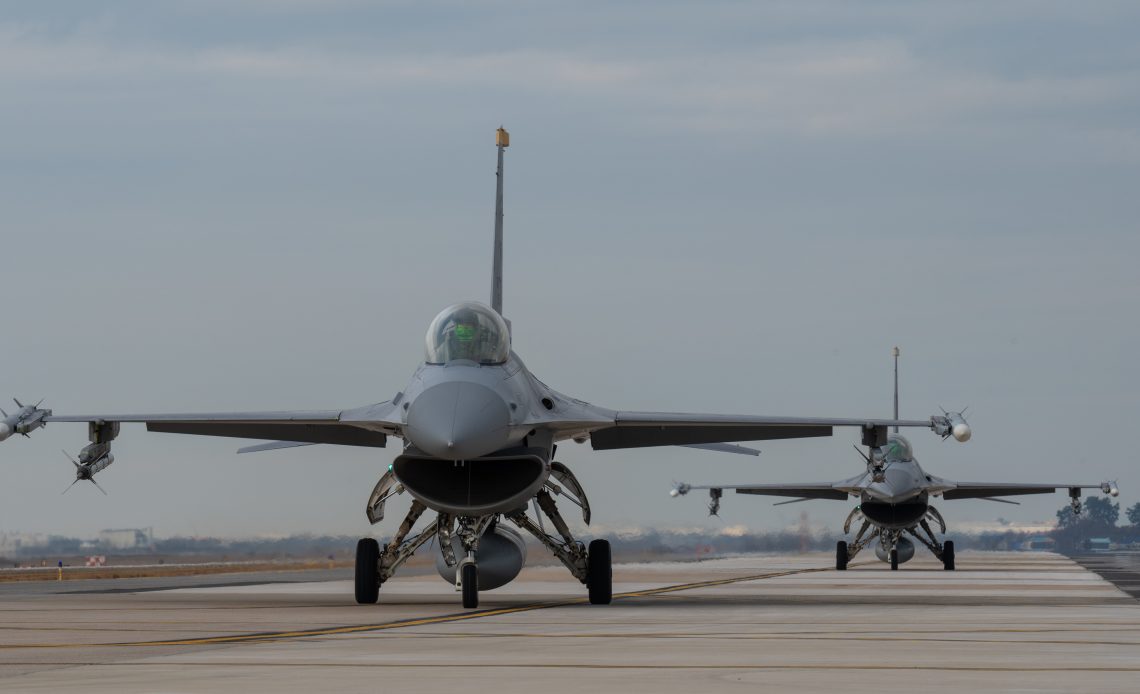
The U.S. Air Force has begun transferring F-16 Fighting Falcon warplanes from South Korea’s Kunsan Air Base to Osan Air Base, located about 80 miles closer to the North Korean border.
The transfer, which began July 31, is in preparation for the Air Force’s “super squadron” test, which began its initial phase last October. At the time, nine F-16s and 150 Airmen moved to Osan.
The second phase of the exercise, approved in April by the chief of staff of the Air Force, will begin this upcoming October and calls for a second super squadron at Osan.
Preparations for this next phase of the test will see a total of 31 F-16s and about 1,000 Airmen transferred there over the summer. The movement will be temporary, the Air Force has stated.
“Osan is receiving additional F-16s as part of the Air Force’s Super Squadron Test Part II initiative, which is a force-optimization test designed to see if a larger, consolidated squadron can generate more combat power and operate more efficiently,” Capt. Bryce Hughes, 51st Maintenance Group Officer and Sortie Generation Flight commander, said in a service release.
The move marks an effort to consolidate air combat power and test logistics, maintenance and manpower capabilities, while bolstering the Seventh Air Force’s support to South Korean defense forces.
Kunsan Air Base will maintain its role as a major hub for U.S. air component forces in South Korea, while the shift to Osan is hoped to provide a more robust defense against threats from an increasingly belligerent North Korea.
“We’ll meet this change with the same warfighter mindset the Wolf Pack has maintained through our history, and strengthen our ability to accept follow-on forces, defend the base and take the fight north,” Col. Peter Kasarskis, 8th FW commander, said in a release when the new phase was initially approved.
While the test is ongoing, the 51st Fighter Wing will expand joint training exercises with the Republic of Korea Air Force and maximize its combat readiness proficiencies.
With a legacy inherited from the Korean War, the 51st Fighter Wing maintains a “Fight Tonight” posture in defense of the Republic of Korea and provides leading defense capabilities to the peninsula, including counter air and fire, interdiction, air strike control and close air support, among other warfighting capabilities.
“The 51st Fighter Wing is leading the charge on the Super Squadron Test,” said Col. Ryan Ley, 51st Fighter Wing commander, in a release. “I’m proud of what the Mustangs have accomplished already, and I look forward to testing the limits of what we can do over the next year.”
Author: Zita Fletcher
Source: DefenseNews
Reviewed By: Editorial Team



